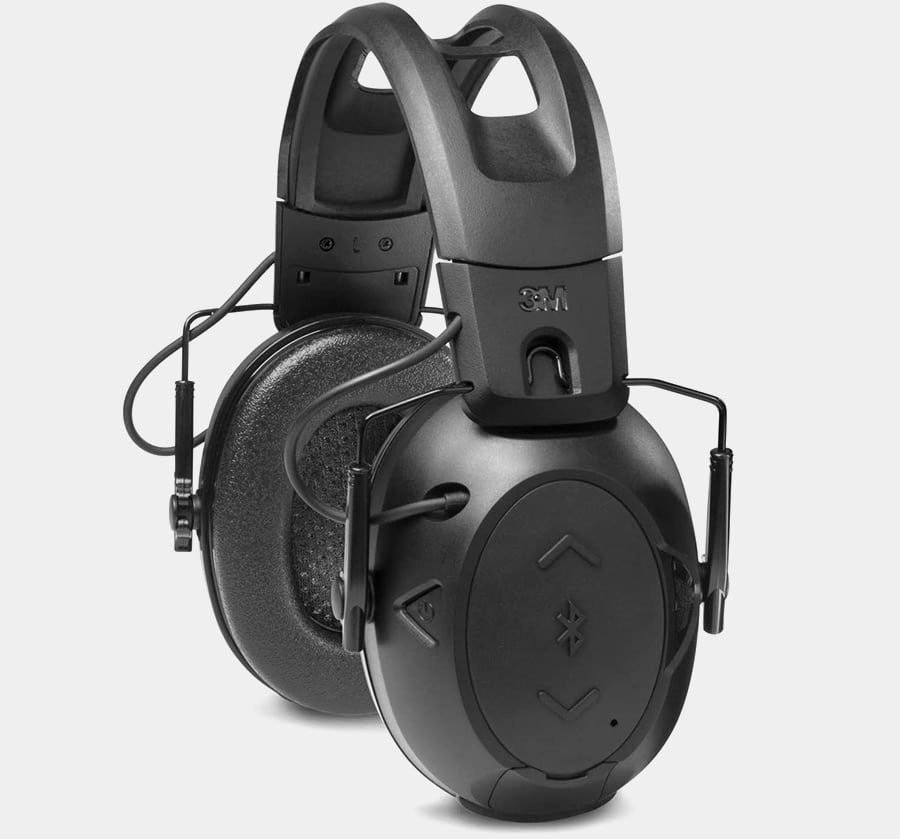Hearing Protection for Shooting: What Is Best?
April 24th, 2022
6 minute read
It’s never quiet for me. Like some bad horror movie, I have an incessant ringing in my ears that robs me of a purely quiet morning in the field. Sometimes, the noise — which no one else can hear — becomes so loud that it makes it hard to concentrate.
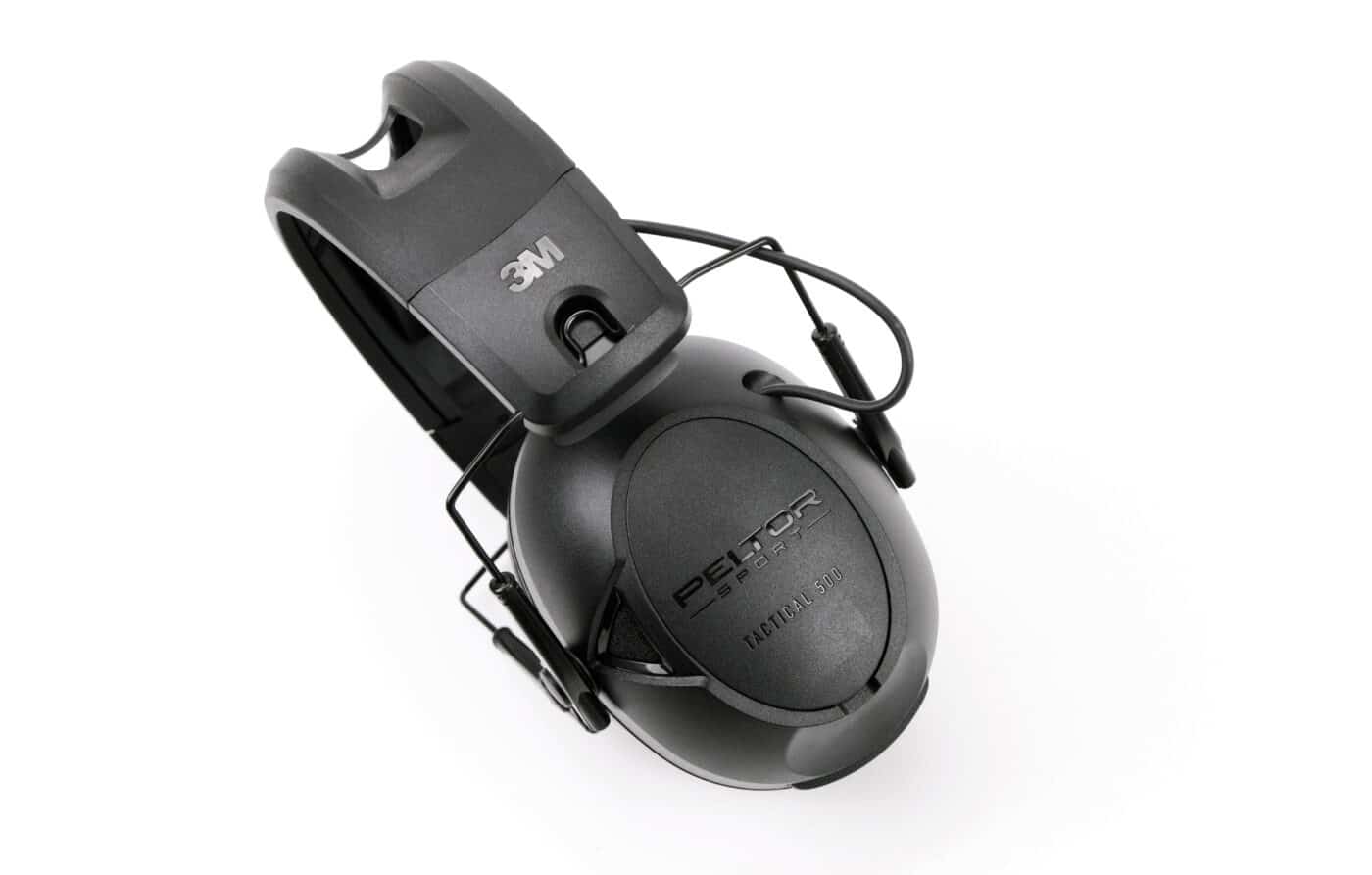
Sadly, I also have a harder time hearing normal conversations. If I’m somewhere with background noise, such as a busy restaurant, hearing others at my table is nearly impossible.
Both the ringing and not being able to hear conversations are forms of hearing damage, damage that is preventable for most people.
Shooters are at high risk for hearing loss and damage. Firearms emit noise that is loud enough to cause permanent damage with a single shot. Repeated shots increase both the likelihood and extent of damage.
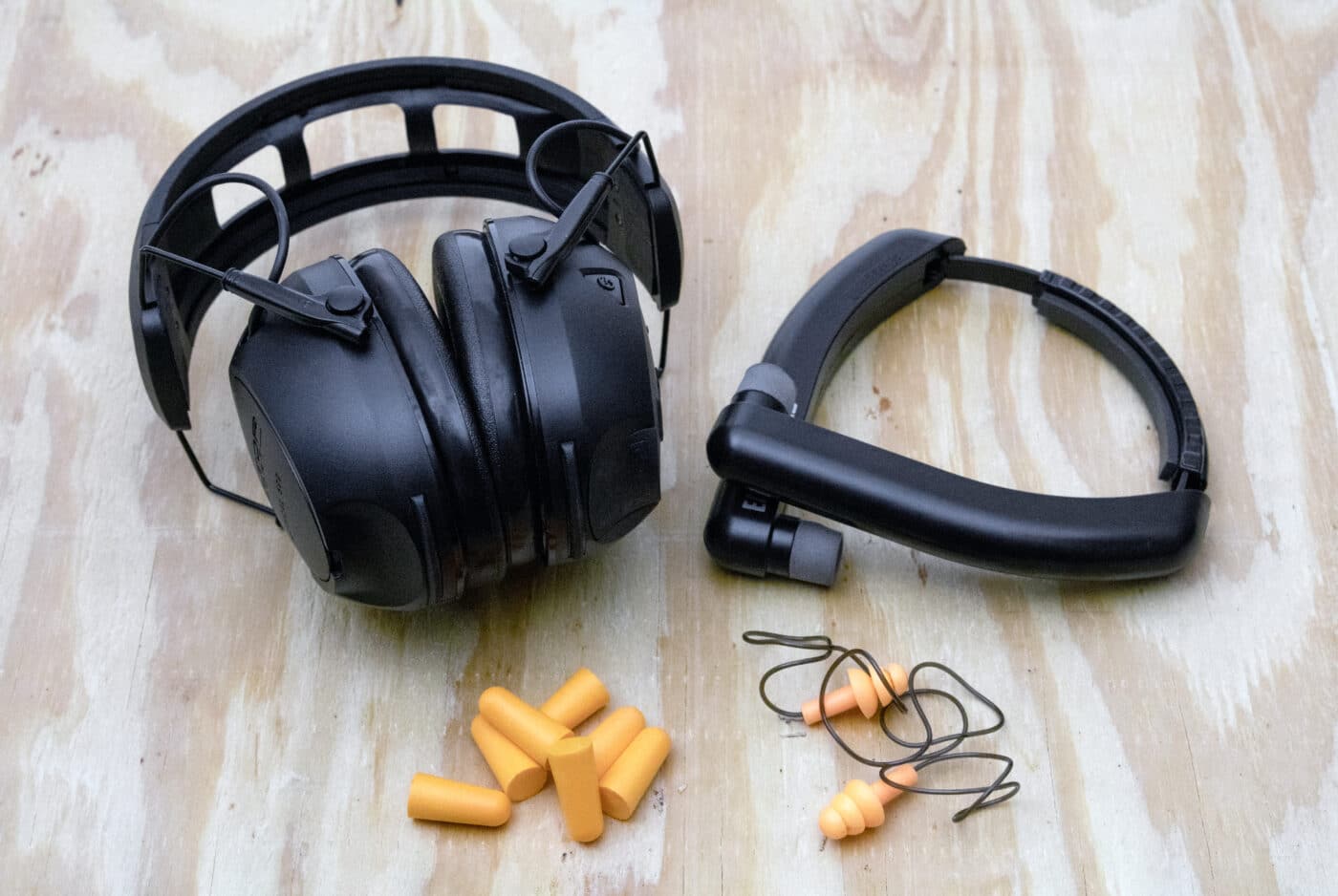
There’s nothing manly about shooting without hearing protection. While defensive circumstances may preclude the donning of ear pro, for practice and hunting you should definitely protect your hearing. You can’t undo damage to your auditory system.
Mechanisms of Damage: Time & Exposure
Hearing damage comes from a combination of two things: the intensity and duration of the sound. The more you have of either, the higher your chances of permanent damage.
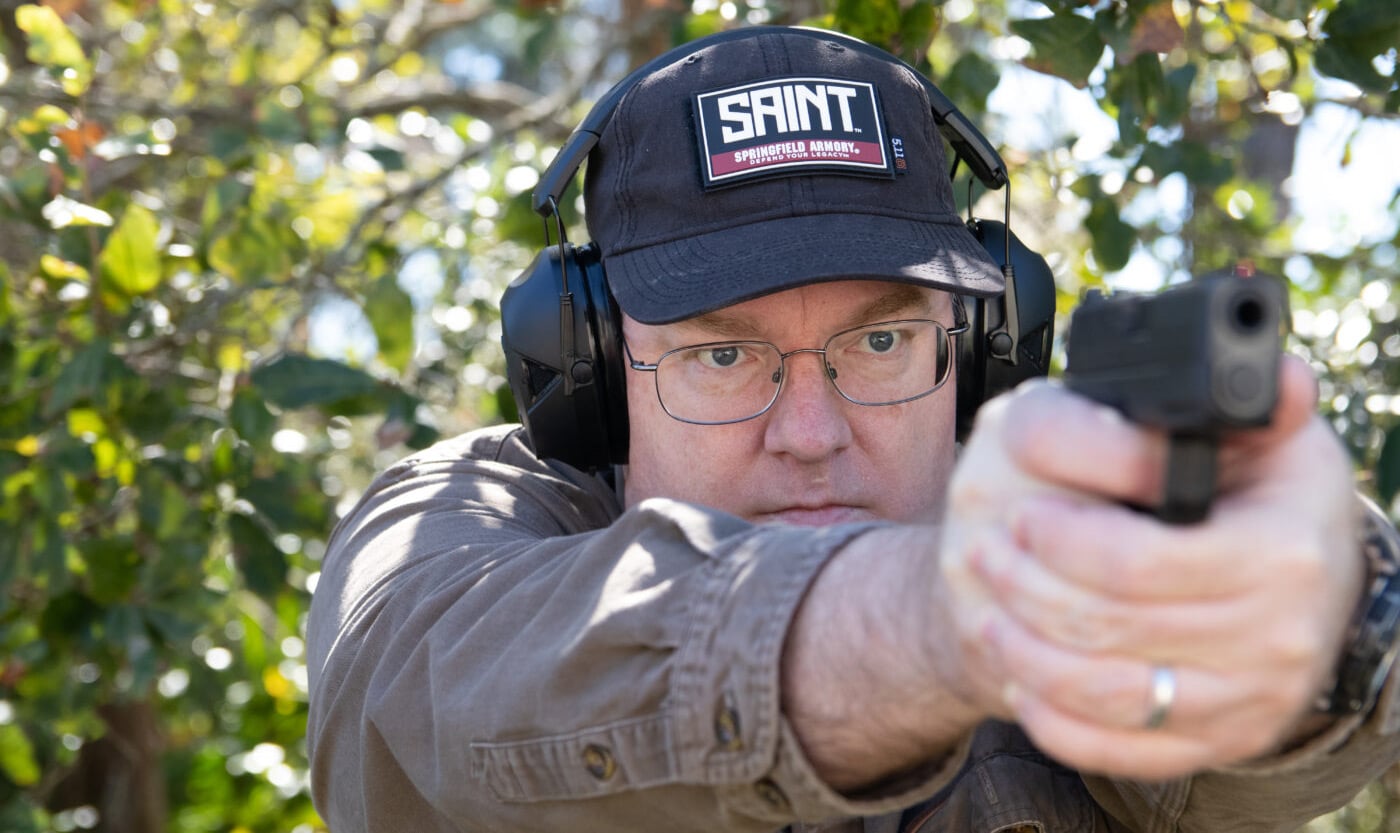
Sound is an energy wave. As its intensity increases, so does the impact it will have on your ears. Likewise, as your exposure time to that sound increases, the more opportunity it has to cause permanent injury. Put another way, a very loud sound may damage your hearing in a fraction of a second, while a less intense noise may require a few seconds of exposure to do harm.
Loudness of a noise is measured in decibels (dB). The decibel scale is logarithmic, not linear. That means as sound increases on the scale, the sound is orders of magnitude greater. For example, moving from 100 dB to 110 dB is not a 10% increase. Rather, every 3 dB roughly doubles the sound energy. Perceived loudness of a 10 dB increase is about double.
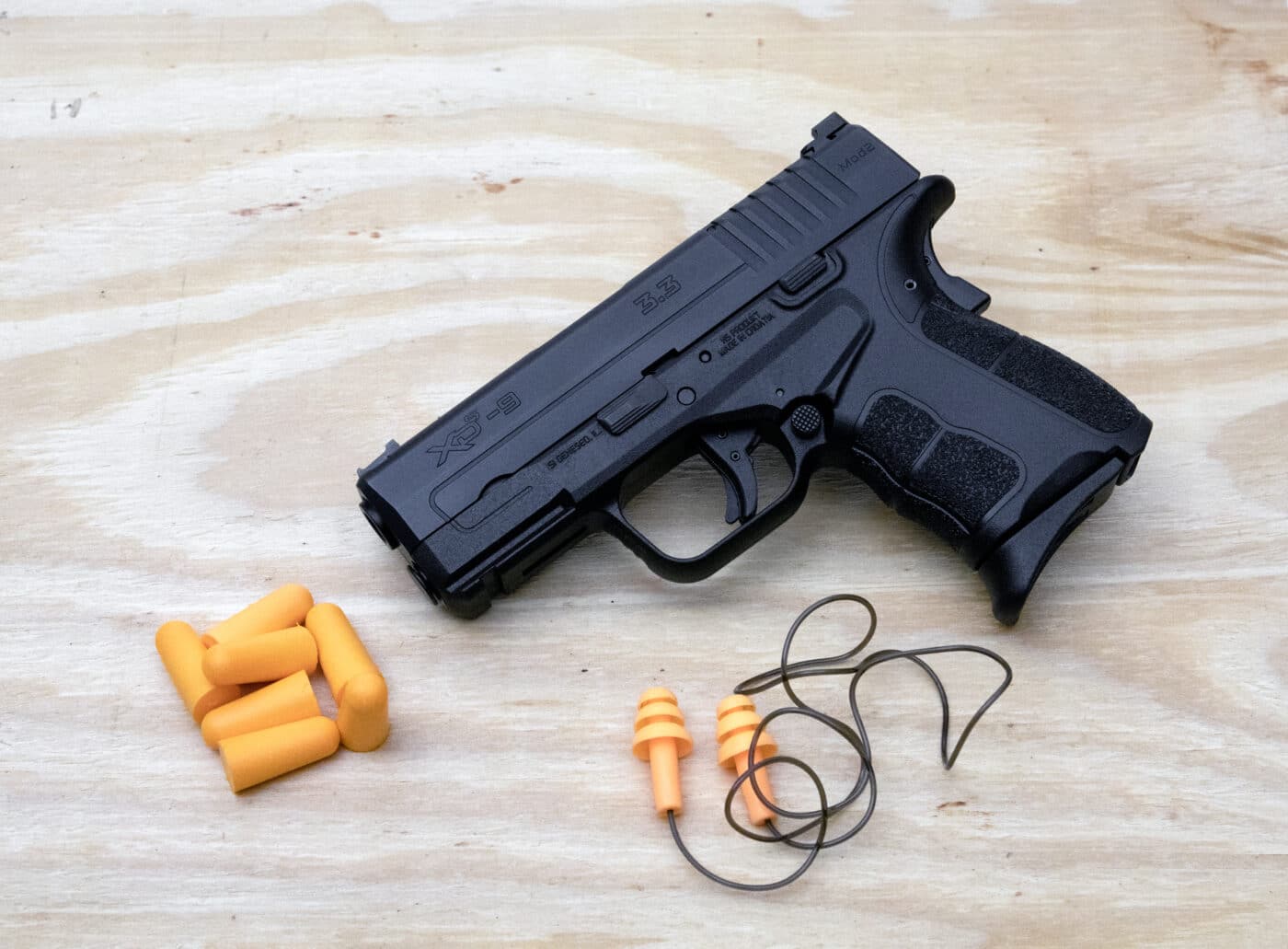
Different cartridges generate different amounts of noise. For example, a 7mm Rem Mag makes a louder report than a .22 LR. However, the barrel length of a gun can also play a major factor. Shorter barrels release more noise than longer ones.
An AR-15 chambered in 5.56 NATO may produce noise in the range of 155 dB to 160 dB. A short barrel version of the same gun pushes the noise louder — 170 dB or more have been measured from ARs with 10.5” barrels. As we know from the logarithmic decibel scale, moving up just 10 dB of sound equates to a doubling of the perceived noise intensity while the physical energy is closer to 10x — all from cutting a few inches from the barrel length.
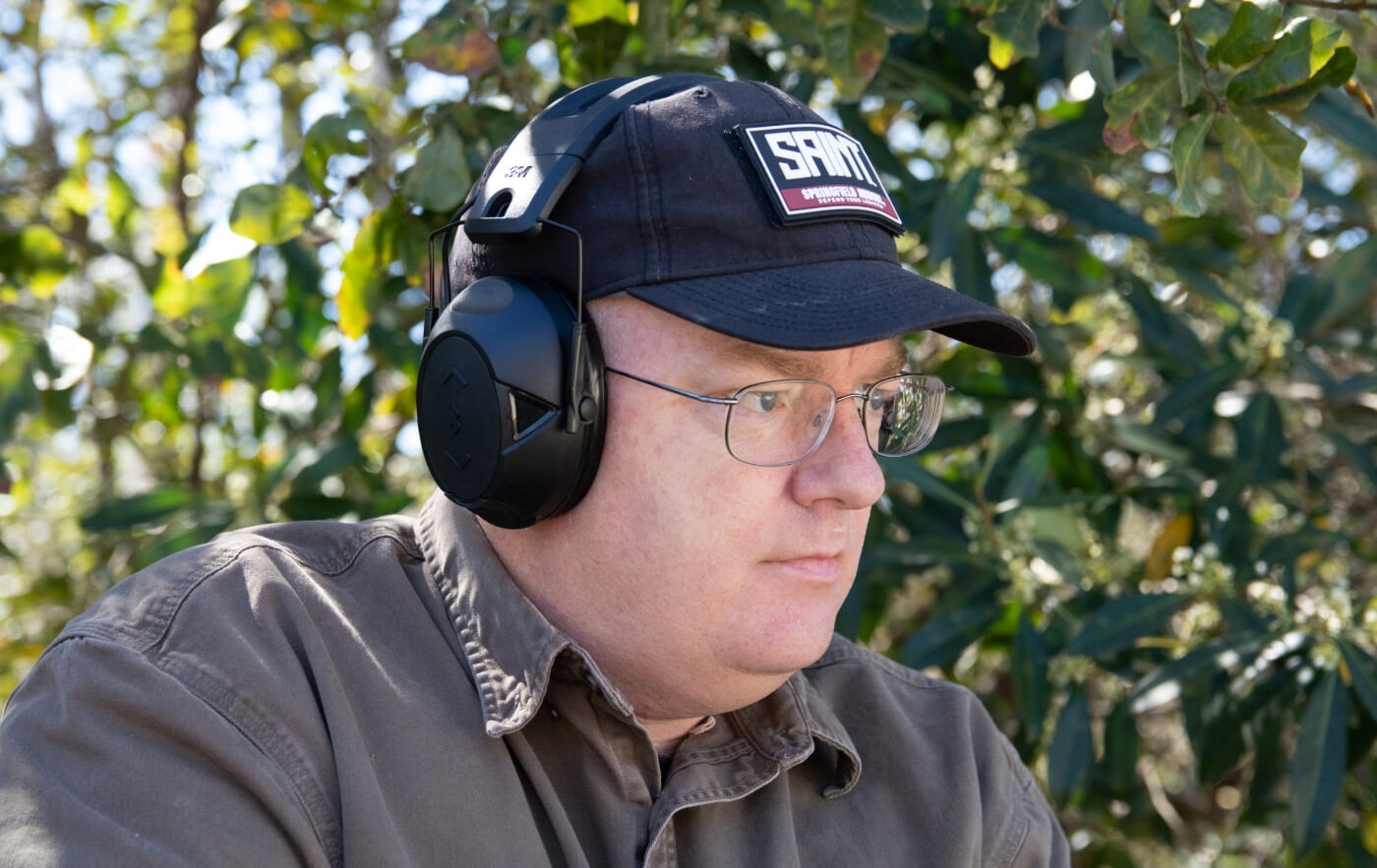
Another factor to consider is how the harmful noise is contained. Shooting at an indoor range is potentially more harmful than shooting in an open field. Remember that sounds are wave energy. In an open field, there is nothing for the waves to reflect off of while in an indoor range, those sound waves bounce back at you from the walls and ceiling. The net effect is the harmful sound appears louder.
To avoid permanent damage, you have to protect yourself.
Forms of Protection
While there are many variations, there are essentially two kinds of hearing protection: in-ear plugs and over-the-ear muffs. Each offers specific benefits, and the two can be combined for improved noise attenuation.
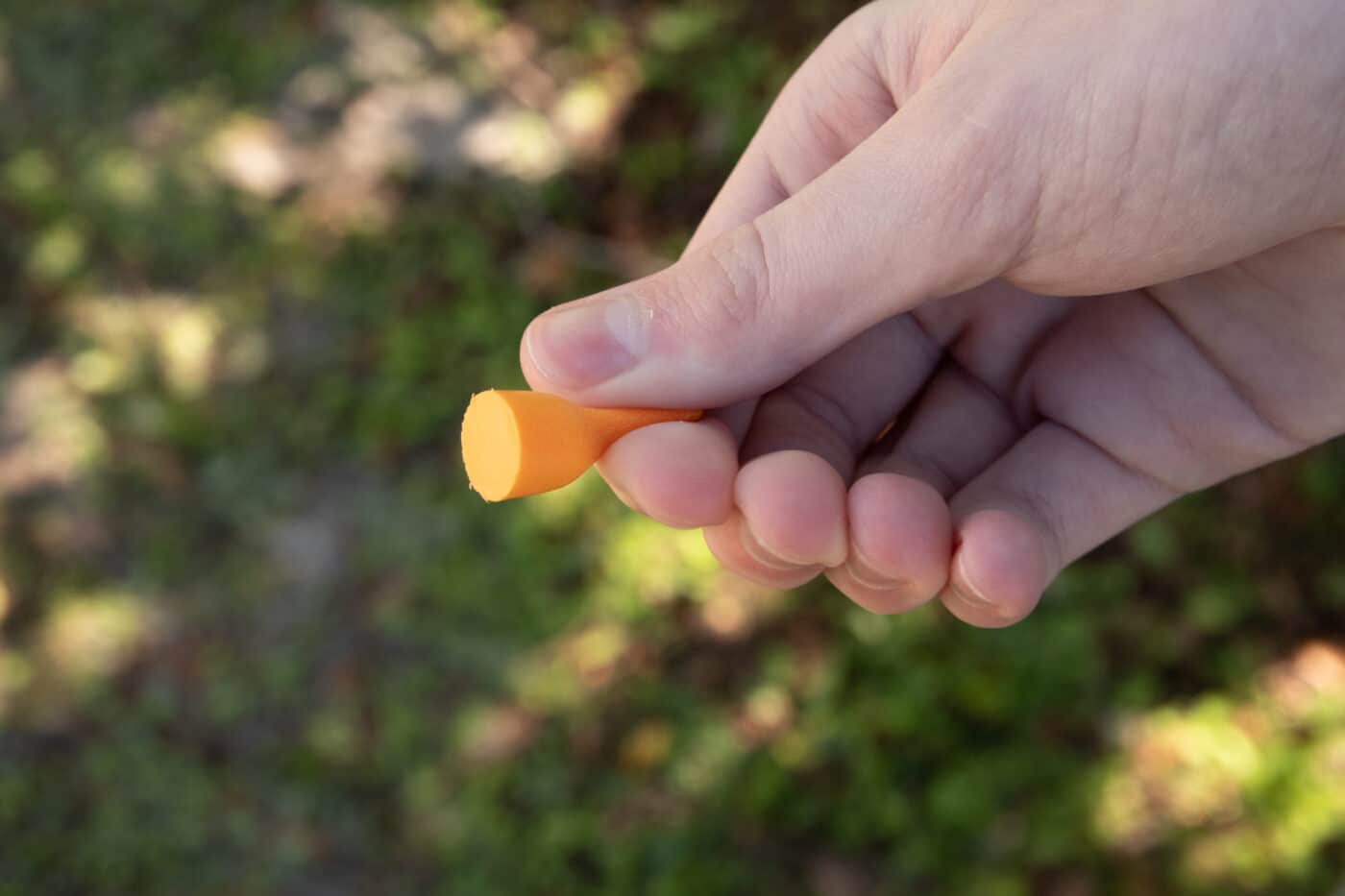
In-ear plugs can vary in construction. Inexpensive foam plugs are the most common. After compressing them between your fingers, you simply insert them into your ears where they expand and reduce all sound coming in. They are surprisingly effective when worn correctly. I’ve seen some that provide 32 dB of noise reduction.
More expensive in-ear hearing protection includes both passive and electronic models that offer varying degrees of protection with some improvement of your ability to hear speech and other non-harmful noises.
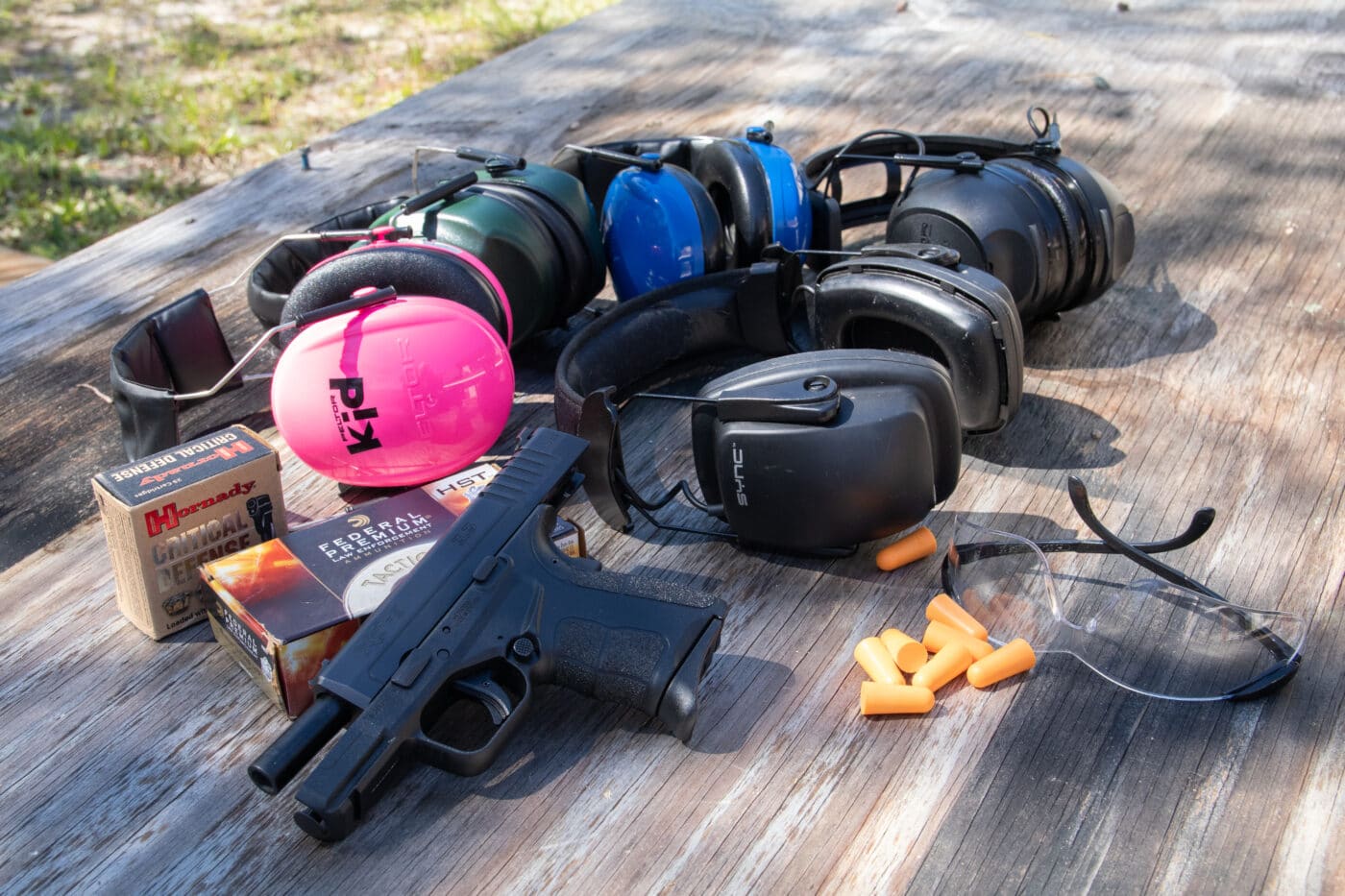
Over-the-ear muffs range from simple foam-filled cups to units with advanced electronics. The most effective muffs provide more than 30 dB of noise attenuation.
Electronic muffs have at least one microphone on the outside of the unit. Quiet sounds are amplified while high energy noises are attenuated. The basic models will register a gunshot or other loud noise and turn off the amplification so that the muffs act like any other passive hearing protection. More advanced models may use compression algorithms and other technologies to reduce the harmful noise while improving speech clarity.
Technology advancements make it possible for manufacturers to offer reasonably priced electronic muffs that offer excellent blends of noise attenuation and features. A perfect example of this is the Peltor Sport Tactical 500 muffs.
Peltor Sport Tactical 500
My favorite electronic hearing protector for the money is the Peltor Sport Tactical 500. This is an over-the-ear style muff that offers 26 dB of noise reduction and proprietary amplification circuitry to provide the clearest, most natural speech I’ve heard in any sub-$100 ear pro I’ve used.
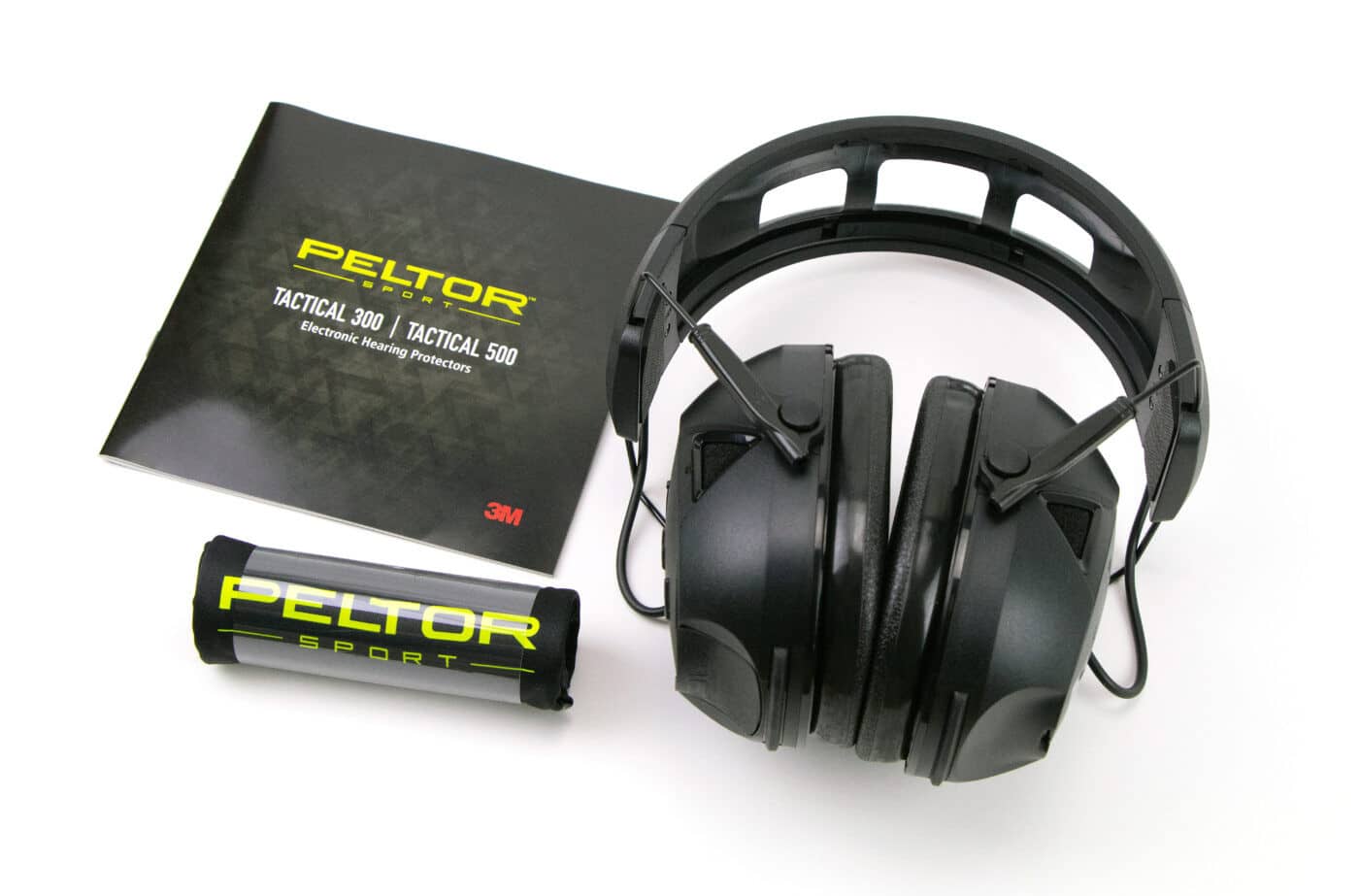
The stereo microphones work with the company’s onboard processors to identify voices for amplification. At the same time, it uses gunshot recognition and dynamic suppression to protect your hearing from harmful noise. I’ve found the system works well.
I’ve heard virtually no wind noise when wearing these and find the low-profile muffs work well with long guns. The headband is also comfortable with vent holes. If you wear a ballcap that has a button on the top of it, the vent holes ensure the button doesn’t press into your head.
Among its other features, the Tactical 500 muffs are Bluetooth enabled to allow you to stream information from your cell phone or other device.
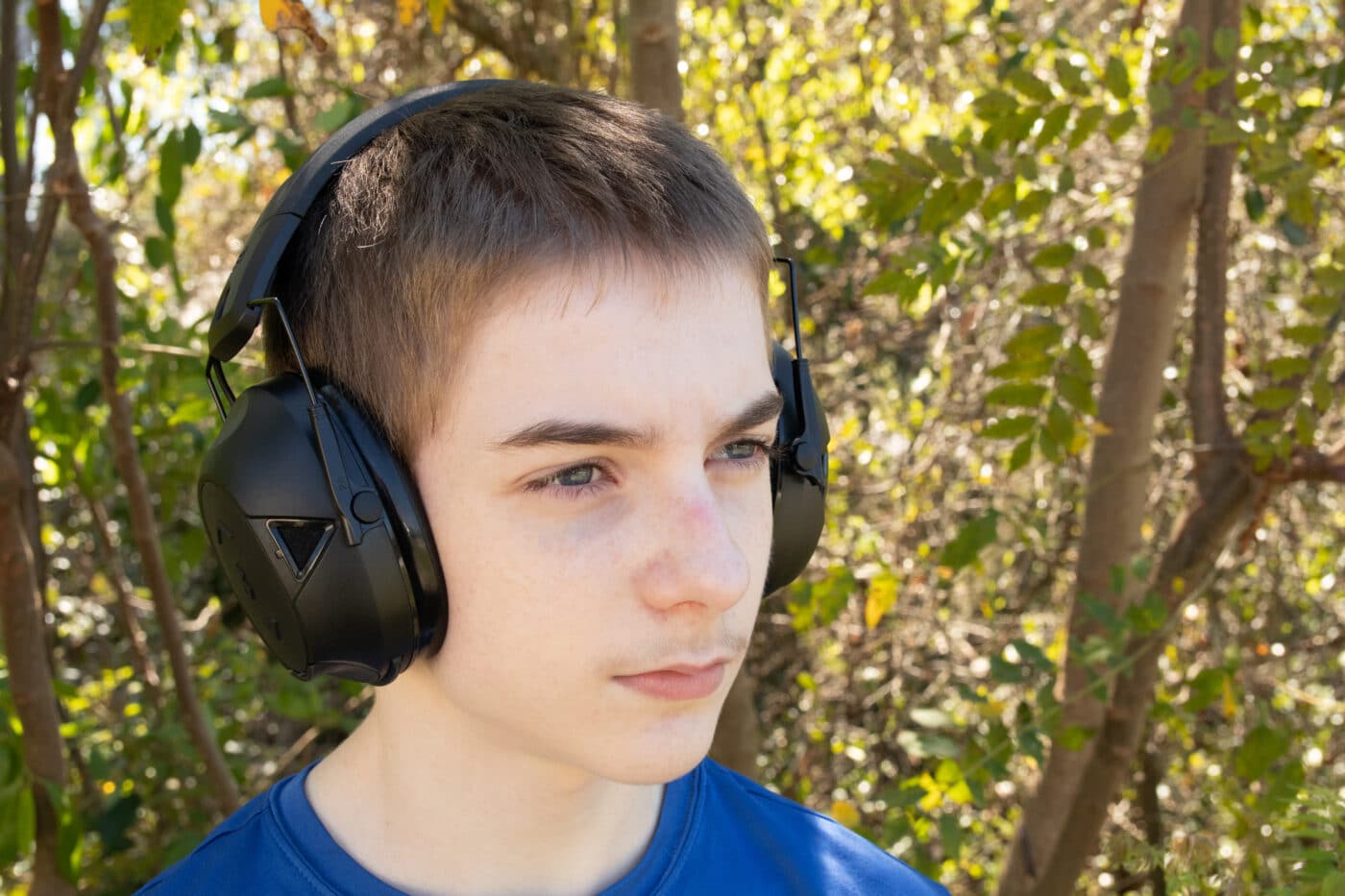
Whenever possible, I recommend people try them on prior to buying. You want to make sure they fit your head comfortably. Assuming they do, I expect you will be pleased with their performance.
Final Thoughts
I’ve become very protective of my remaining hearing. Whether I’m running the lawnmower in the yard or the drill press in the garage, I’ve got a set of muffs on. If I am on the range, I always double up by combining in-ear plugs and over-the-ear muffs.
Good muffs or ear plugs will provide about 30 dB of noise reduction. While this helps protect your hearing, doubling up and using both will increase the attenuation by about 5 dB. Getting 35+ dB in noise reduction helps me preserve my remaining hearing.
For those younger than me, that kind of protection can safeguard your hearing for a lifetime. You don’t want to spend the rest of your life in silence save that maddening ringing.
Editor’s Note: Please be sure to check out The Armory Life Forum, where you can comment about our daily articles, as well as just talk guns and gear. Click the “Go To Forum Thread” link below to jump in!
Join the Discussion
Featured in this article
Continue Reading
Did you enjoy this article?

 93
93




